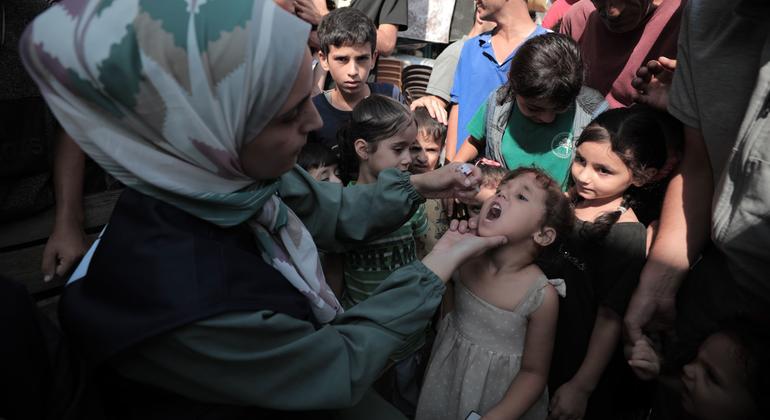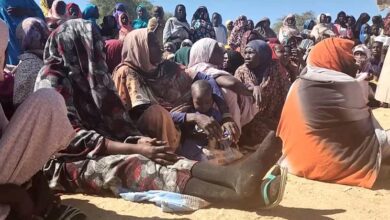Gaza: Disease and war still haunt children, despite vaccine success


It has been nearly 11 months since war broke out in the enclave following Hamas-led terror attacks in Israel. Today, more than nine out of 10 people have been displaced by the fighting, leaving them vulnerable to hunger, malnutrition and disease.
“We have been able to vaccinate 187,000 children so far and as we go from tent to tent and from shelter to shelter,” said Louise Wateridge from the UN agency for Palestinian refugees. UNRWA.
“The reality is that these vaccination activities are taking place in the middle of a war zone, while many other diseases, such as hepatitis A, are spreading,” explained a UNRWA spokesperson.
“Most of the children I see have skin diseases and rashes.So while we are doing everything we can to vaccinate against a disease, the inhumane conditions that cause and spread these diseases continue.”
Health risks
A UNRWA spokesman described scenes at one health centre where sewage was flooding into surrounding streets, forcing children away from health hazards to receive polio vaccinations.
“People need everything – beyond polio vaccine, medical supplies, hygiene products and clean water are absolutely vital to stopping the spread of the disease,” Ms Wateridge stressed.
“What the people need most is a ceasefire and they need it now.“
Wednesday marked the final day of vaccinations in the Central Gaza Strip, which humanitarians said was a resounding success.
In addition to UNRWA, this operation is a joint effort of the United Nations with the United Nations World Health Organization (WHO), United Nations Children’s Fund (UNICEF), partner NGOs and volunteers.
Despite the ever-present threat of attack, families still take their children to health centers and schools for the first of two vaccinations, a legacy of strong support for vaccination in the region before the war.
For those who cannot move easily, aid groups have been reaching out to vulnerable families and children to ensure that all children under 10 are vaccinated.
“It’s positive to see kids out and about, show us their pinky finger with a colored marker to proudly show that they have been vaccinated“, said Ms. Wateridge.
No rest time for medical staff
After four days of continuous work for the vaccination campaign in the Central Region, some 2,200 health workers will move to southern Gaza to continue their work on Thursday morning.
Once complete, efforts will shift north, before the whole process starts again in four weeks, to administer a second dose of vaccine to boost protection levels.
Vaccination teams are able to operate with some degree of security, thanks to humanitarian pauses agreed with the Israeli army and Hamas militants between 8am and 2pm – although violence has not yet ceased.
“The pauses were welcome, but the bombing and air strikes did not stop…our teams were taken for vaccinations, surrounded by the noise of air strikes“, the UNWRA official explained.
“Although I could not pinpoint the location of the attacks I heard around me in the mid-section, hearing them was disturbing to children and their families as well as health workers distributing polio vaccines.”
Child tragedy
In a related development in Geneva, The UN Committee on the Rights of the Child has heard Israel condemn Hamas for the “catastrophic” deaths of children caused by war..
Israel’s ambassador to Geneva, Daniel Meron, told a panel of independent human rights experts in a scheduled national review on Tuesday that Hamas was “deeply entrenched in the civilian population”, with tunnels located “in the bedrooms of children in Gaza” and beneath schools, serving as “weapons storage and rocket launch sites”.
“Weapons were found under baby cribs. Weapons were found inside teddy bears, in maternity wards, in hospitals.,” he told the committee, reporting to Human Rights Council and members who are not United Nations employees.




